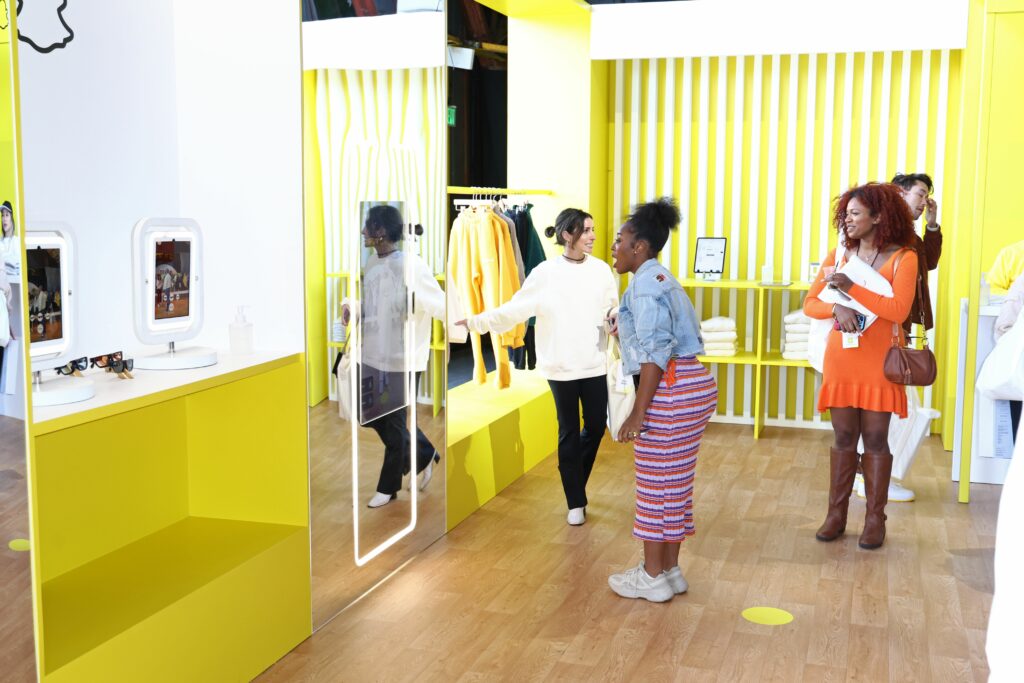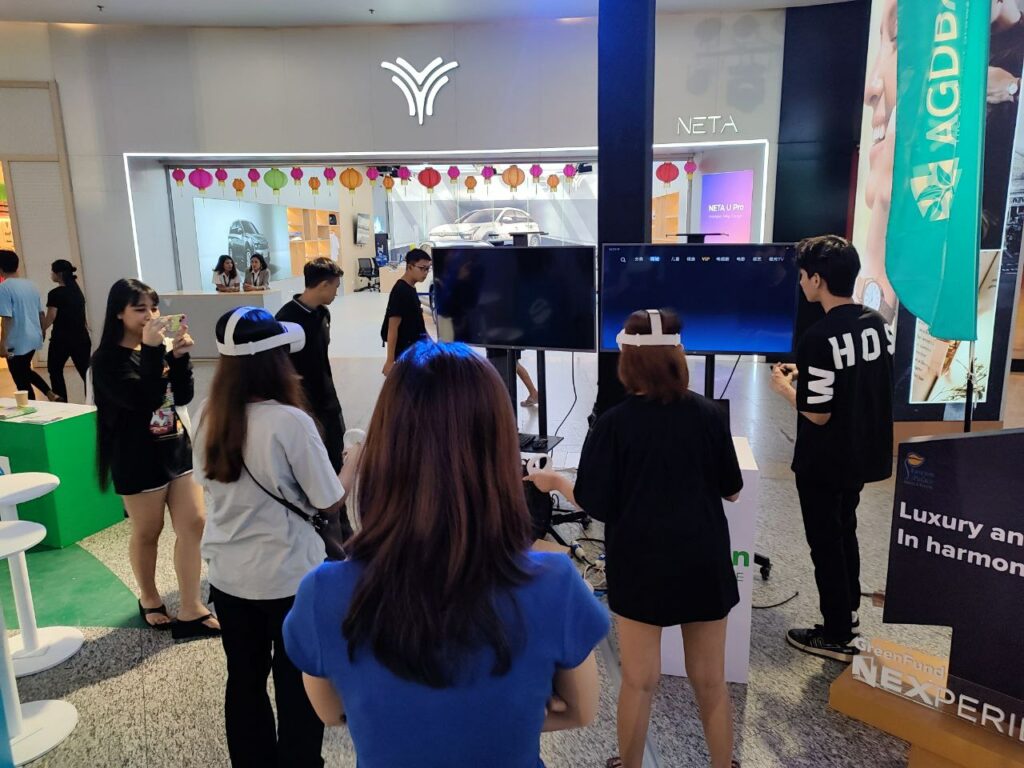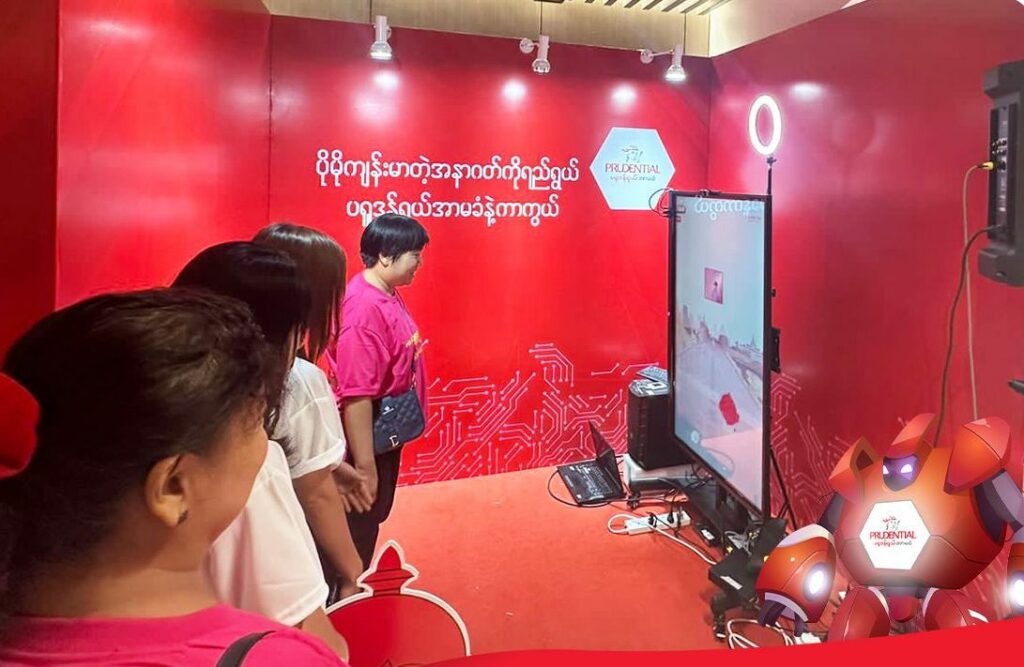In the bustling world of advertising, standing out is not just an option—it’s a necessity. rangoon.tech (Mekongverse for Cambodia) is at the forefront of this revolution with its cutting-edge Augmented Reality (AR) mirror technology, transforming outdoor and digital signage into dynamic, interactive experiences.
Transforming Passersby into Participants
Imagine walking through a busy street or shopping center and encountering a mirror that not only reflects your image but also overlays it with vibrant, interactive digital content. This isn’t just a mirror; it’s an invitation to engage, a portal to a new kind of consumer experience. Rangoon.Tech’s AR mirrors are changing the way brands connect with audiences, making every interaction memorable and impactful.
The Magic of AR Mirrors
The magic of AR mirrors lies in their ability to overlay digital content—such as ads, product information, or interactive games—directly onto the real-world environments reflected in the mirror. This seamless integration of digital and physical realms captures the attention of even the most distracted passerby, turning mundane routines into engaging adventures.
Why AR Mirrors?
AR mirrors are not just advertising tools; they are experiential portals that transform viewers into participants, making the marketing message more impactful and memorable. Here’s why they are becoming essential in outdoor advertising:
- Increased Engagement: AR mirrors create highly interactive experiences that captivate audiences. By integrating real-time digital enhancements with physical environments, these installations encourage passersby to stop, interact, and engage with the advertisement, increasing the time they spend with the brand message.
- Enhanced Personalization: AR technology allows for personalization at scale. Individuals can see themselves integrated into the advertising content in real-time, making the experience more relevant and impactful. For instance, they might see how a fashion item looks on them or how a new hairstyle changes their appearance. This personal connection can significantly boost the advertisement’s effectiveness.
- Memorable Experiences: The novel and often surprising nature of AR interactions ensures that these experiences are memorable. People are more likely to remember and talk about an advertisement that has personally involved them or provided a unique experience, compared to standard passive ads.
- Sharable Content: AR experiences are inherently share-worthy. Users are inclined to share their unique interactions on social media, providing additional organic reach and exposure for the brand. This not only extends the life of the campaign but also multiplies its impact beyond the physical location of the OOH installation.
- Data Collection and Insights: AR-enabled installations can collect valuable data on user interactions, preferences, and behaviors. This data can help marketers understand what attracts attention, which elements engage users the most, and how people generally respond to their campaigns. These insights can be used to refine marketing strategies and improve future campaigns.
- Versatility and Scalability: AR mirrors can be adapted for various types of content and can be installed in numerous environments such as shopping malls, transport hubs, and city squares. This versatility makes it easy to scale campaigns across different locations and target demographics.
- Improved Brand Perception: By leveraging cutting-edge AR technology, brands can position themselves as innovative and forward-thinking. This helps improve brand perception, particularly among tech-savvy and younger demographics who value innovation and digital engagement.
- Sustainable Options: Digital AR displays can be updated remotely without the need for physical replacements or printing new materials. This can make AR a more sustainable option than traditional OOH advertising methods.
How to Use AR Mirrors in Digital Signage
Incorporating AR mirrors into digital signage is straightforward but requires thoughtful implementation:
- Location Selection: Choose high-traffic areas such as shopping malls, busy streets, or public squares where digital interactions naturally occur.
- Content Design: Develop interactive content that can change based on the audience in front of the mirror, such as changing colors, adding virtual try-ons, or interactive games related to the product.
- Integration: Seamlessly integrate AR mirrors with existing digital signage systems, ensuring they are both operationally compatible and aesthetically coherent.
Key Features of AR Mirrors in Digital Signage
- Virtual Try-Ons and Makeup Simulation: Allow consumers to see how products look on them without physical trial.
- Facial and Gesture Recognition: Enhance interactions by responding to user expressions and movements.
- Dynamic Content: Adjust the content based on external factors like weather or the audience in front of the screen.
- Social Media Integration: Enable users to share their AR experiences online directly from the mirror.
- Interactive Games and Background Replacement: Provide entertainment while subtly integrating brand messages.
Real-World Use Cases: The Pepsi Max “Unbelievable” Campaign
Perhaps the most iconic example of AR in OOH advertising is the Pepsi Max “Unbelievable” campaign. A bus shelter in London was equipped with a digital screen that overlaid unexpected scenes onto the real street behind it, such as an alien invasion, a robot attack, and a loose tiger. This campaign not only drew attention but also went viral online, significantly boosting the brand’s visibility and consumer engagement.
Objective:
- The primary goal was to create a memorable, engaging experience that would not only surprise and entertain people but also virally promote Pepsi Max through social shares and media coverage.
Outcomes:
- The campaign was highly successful, generating significant buzz on social media.
- Videos of the bus shelter in action went viral, garnering millions of views on YouTube and other social media platforms.
- The campaign effectively demonstrated the brand’s focus on creating fun and unexpected experiences, aligning with Pepsi Max’s brand message of living life to the max.
AR mirrors are reshaping the landscape of outdoor advertising. By offering a blend of interaction, personalization, and entertainment, they provide a compelling way for brands to create deeper connections with their audience. As technology advances and becomes more accessible, we can expect to see AR mirrors become a staple in OOH advertising strategies. Engage your audience in an unforgettable way with AR mirrors and watch your brand’s impact grow.





